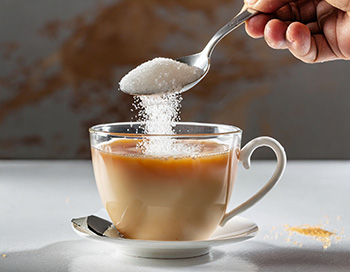Unlike supermarkets and greenhouses, nature doesn’t provide a continual supply of everything. She wants us to tune in to her rhythms, enjoy variety, go without sometimes, and drool over her fresh creations as they come into season. Eating seasonal produce supplied by local growers is a great way to tune in.
You can’t get more local than your own backyard. And you won’t have to open your wallet much at all if you grow your own fruit and veggies. Silver beet is a fabulous staple, and even a pot of herbs on the windowsill is a start. With the climate crisis disrupting our food supply and sending prices through the roof, now is the grow-your-own hour.
The UN Intergovernmental Panel on Climate Change (IPCC) calls for a 30% reduction in animal product consumption by everyone. Yes, everyone. We need to eat more plants for the sake of our planet, our health and, ultimately, so humanity can survive.
But most of us can’t grow much food at home. Our commercial growers keep you and me alive. The more we can respect this, identify with them, and buy locally, the better.
Growers have to had to adjust to fluctuating yields and new challenges every year. But with skyrocketing costs, unpredictable financial returns, labour shortages, shifting seasons and shock after shock of extreme weather events, they’re being forced to be more inventive than ever. These ongoing trends will force us as consumers to adapt, too, and the faster we do, the happier we’ll be. We’re all in the climate crisis paddock together, a field now required to yield more and emit less greenhouse gas.
Reinventing farming
Open days and food events give the public a behind-the-scenes look at what’s involved in providing us with food. I went on the ‘Horowhenua Taste Trail’ and loved every minute. My focus was on plant-based food and how our local producers are rising to the challenges climate change is hurling their way.
Where I live, tornadoes and hail the size of golf balls have been tearing infrastructure apart, and floods and droughts are threatening soil-grown crops. Many growers across the country are going through the mill, and they know extreme weather challenges are going to increase.
I thought I’d see concern and bravery on our local grower’s faces. Instead, they were full of enthusiasm and kiwi ‘number 8 wire’ attitude. I didn’t find animal-food producers who are replacing their stock with plants or food crops for people. But at least reinventing horticulture is on the menu. Ten of the sixteen participating businesses were producing plant-based food. Fantastic!
Genoese Foods, here in my hometown, Levin, was one of the first NZ companies to make plant-based pesto. It contains a generous amount of basil, which, for various reasons, had to be grown in Fiji. They reinvented systems so they can use locally grown basil. This significantly reduced the company’s food mile footprint and created work for local people.
Creativity and experimentation are also all go at Lewis Farms. This family business supplies New Zealand with ‘Tendertips’ asparagus. Like several companies who are thinking ahead, their crop sites are spread across the district to provide some protection against isolated climate events. Now, they also grow strawberries – in grow bags, off the ground at easy-harvest height, so workers don’t have to break their backs bending down to the soil.
The under-cover method protects these juicy treats from harsh weather and extends the seasonal supply. Energy use is lower than in an enclosed greenhouse because heating and cooling are not needed. Geoff Lewis was buzzing with excitement as he showed me around. Seaweed is added to the nutrient mix to provide natural trace minerals. Grow bags and nutrient runoff are recycled for reuse. Biological pest control means no chemical sprays. I found all this impressive, considering it is not an organic farm.
Staff enjoy being creative in the new farm kitchen, too, reducing food waste by making small batches of ice cream and jam from strawberries that would be otherwise be rejected by the markets. More diversification is on the way. Raspberries are next in line.
A substantial percentage of New Zealand’s vegetables are grown by another family business in the Horowhenua, Woodhaven Gardens. Though they use regular fertilisers and sprays, they are reducing the amount applied. Crop rotation is practised, and cover crops are ploughed back into the earth to enrich the soil. They say one of the keys to the farm’s success has been the ability to adapt and, in some cases, pre-empt changes.
“Many a night in summer was spent hand watering plants from a trailer-mounted tank. Now we irrigate via automated irrigation systems and monitor water and fertiliser use. Planting was all done by hand, but it’s now done via cell transplanting. We’ve also made major advances in integrated pest management and how crops are produced and harvested. This allows us to achieve healthier products and more sustainable production.”
With the climate crisis accelerating, growers everywhere are going to need to adapt even more extensively and with increasing speed.
The word ‘sponge’ was suddenly on every expert’s lip after the Auckland floods; soil and natural waterways absorb water like a sponge instead of gushing along roads, smashing bridges, bringing down trees and destroying people’s homes.
As thousands of onions were being washed along the streets in Pukekohe, American journalist Ryan Peterson happened to be writing about the ‘sponge’ principle on regenerative farms. In an article for Civic Eats, he said, “Every 1 per cent increase in soil organic matter equates to 20,000 gallons of additional water holding capacity per acre in the top 12 inches of soil.”
That will be water held safely in the ground, ready to help crops survive the next drought. We can do the same in our own yards, enriching the soil with kitchen compost. Peterson reminds us that “this organic matter is comprised largely of carbon, meaning these soils are also acting as carbon sinks.” Commenting on similar floods in California, he adds a proviso, “These farmers may suffer some losses from the severity of this weather. No one is immune. But their systems are far more capable of bouncing back.”
Rebuilding community
It was inspiring to see so many small businesses taking part in the Trail. I enjoyed tasting their food. Yum! Artisan-style chilli sauces, gourmet mushrooms, hemp products, chocolate, and cider, as well as crunchy seed crackers and Thoroughbread’s soft and delicious vegan loaf. Thoroughbread gluten-free bakery have won several national awards, beating the biggest and best in the land.
Many areas in the country are growing and producing plant foods. Yours will be too. Small businesses are at the heart of every community. Support them. They bring people together in local shops and stalls and provide products suited to the area. They’re a source of local pride or, sometimes, when warranted, of local disapproval. People talk, and knowing the cons is every bit as helpful as knowing the pros. You can learn far more about what you’re buying from a small, local provider than from a multinational corporation.
Food banks and local farmers’ markets are strengthening our communities. People with initiative and a social conscience are starting fresh produce exchange schemes, community gardens and creative, small ventures. Together, we can create a better future.
Redefining luxury
The climate crisis is accelerating, making food increasingly expensive. But does the population want to look at the root cause and act to slow climate change in our own lives? The majority still demand imported tropical fruits, tomatoes in winter, and ‘to die for’ luxury treats.
We can ease the cost-of-living blues by redefining luxury and raising the pleasures of living a simple life to luxury status.
No cafe cake or food treat compares with the flavour of a fresh cape gooseberry for me now. The comforting taste of locally grown new potatoes is a high in itself. Raw baby peas – swoon! Any freshly harvested produce, for that matter. Local food. The first foods of the season. Oh my! Doesn’t a firm, fresh, locally grown tomato taste good when you’ve not bitten into one for almost a year?
You’ve not experienced this particular bliss? Then I’ve a challenge for you.
The ‘YES!’ challenge
Are you strong enough to stick to a Year Eating Seasonal? A year enjoying locally grown fresh fruit and vegies? This is the YES challenge!
Don’t worry. No one will be judging you. There’s no map, no attractive illustrated plan of action, no certificate of achievement. You decide how to proceed as situations unfold. A few exceptions are OK … bananas are one of mine. It’s the journey that matters, discovering how nature does things.
Taking up the YES challenge you’ll be supporting and living the ‘low-food-footprint’ three R’s – Reinventing Farming, Rebuilding Community, and Redefining Luxury. It could well change your life like it has mine. I’ve still got a long way to go, as we all do. But there’s no way I want to turn back.
As for growing vocal – if you’re like me, you’ll want to talk with the whole world about the joy of eating plant-based – so delicious and rewarding.






